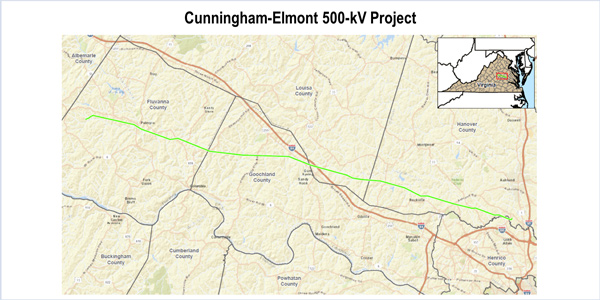By Rory D. Sweeney
PJM and FERC must reconsider how they allocate the costs of high-voltage transmission projects developed to satisfy individual utilities’ planning criteria, the D.C. Circuit Court of Appeals ruled Friday (17-1040, 17-1041).
Old Dominion Electric Cooperative, Dominion Energy Services and Virginia Electric and Power Co. challenged FERC’s approval of a PJM Tariff revision that resulted in the RTO assigning all the costs for two transmission projects proposed by the companies to the Dominion zone.
Dominion had initiated both projects in July 2013 as part of its FERC Form 715 criteria, which allow utilities to set planning criteria for their zones that go beyond NERC or RTO requirements. At the time, PJM’s rules required that half of the cost of high-voltage projects be assessed on a pro rata basis to all 24 utilities in the RTO based on customer demand, with the remainder allocated to zones based on benefits, as determined by a distribution factor (DFAX) analysis.
Dayton Power & Light objected to using the 50% pro rata allocation for Dominion’s initial Elmont-Cunningham project.
PJM then proposed a Tariff amendment that would prohibit cost sharing for projects proposed to satisfy TOs’ own planning criteria. FERC initially rejected the proposal, saying it violated Order 1000 and was inconsistent with the commission’s earlier finding that high-voltage transmission lines provide “significant regional benefits that accrue to all members of the PJM transmission system.” (See FERC Rejects PJM Cost Allocation on Dominion Project.)
After a technical conference, however, the commission reversed its decision, ruling that projects such as Elmont-Cunningham belonged in a new category of projects included in the Regional Transmission Expansion Plan for coordination but not selected for cost allocation. The commission then used the amendment to reject regional cost sharing for the Elmont-Cunningham and a subsequent Cunningham-Dooms project. (See FERC Does 180 on Local Tx Cost Allocation in PJM.)
Commissioner Cheryl LaFleur dissented, saying that the commission should preserve regional cost allocation “for certain high-voltage projects, even if those projects are selected solely to address local planning criteria.”
‘Severe Misallocation’ of Costs
The court agreed, saying FERC’s approval of the Tariff change was “arbitrary” and would result in a “severe misallocation of the costs” of high-voltage projects. It noted that the Dominion zone would receive less than 50% of the benefits of each of the two projects.
“FERC’s reasoning would replace a cost-allocation formula about which FERC had expressed no concerns with another one that is less accurate overall, as well as grossly inaccurate with respect to high-voltage projects, in return for no countervailing regulatory benefit,” the court said.
Because FERC has already acknowledged the regional benefits of high-voltage infrastructure, it “could hardly say that trying to distinguish between high- and low-voltage facilities was not worth the trouble.” By holding to a principle of cost causation, “FERC must make some reasonable effort to match costs to benefits,” the court said. “The cost-causation principle focuses on project benefits, not on how particular planning criteria were developed.”
“We fail to see how a categorical refusal to permit any regional cost sharing for an important category of projects conceded to produce significant regional benefits can be reconciled with the background [cost-causation] principle,” the court added. “We are sensitive to the concern, pressed by Dayton and the other amici supporting FERC, that individual utilities should not have free rein to impose unjustified costs on an entire region by unilaterally adopting overly ambitious planning criteria. However, nothing we say here prevents PJM or its member utilities from amending the Tariff, the Operating Agreement or PJM’s own planning criteria to address any problem of prodigal spending, to establish appropriate end-of-life planning criteria or otherwise to limit regional cost sharing — as long as any amendment respects the cost-causation principle.”
The court remanded the three orders back to FERC for further review.
“The legal or economic merit of Dominion’s particular end-of-life planning criteria, and the appropriateness of the Elmont-Cunningham and Cunningham-Dooms projects under those criteria, remain open issues on remand,” the court said.




